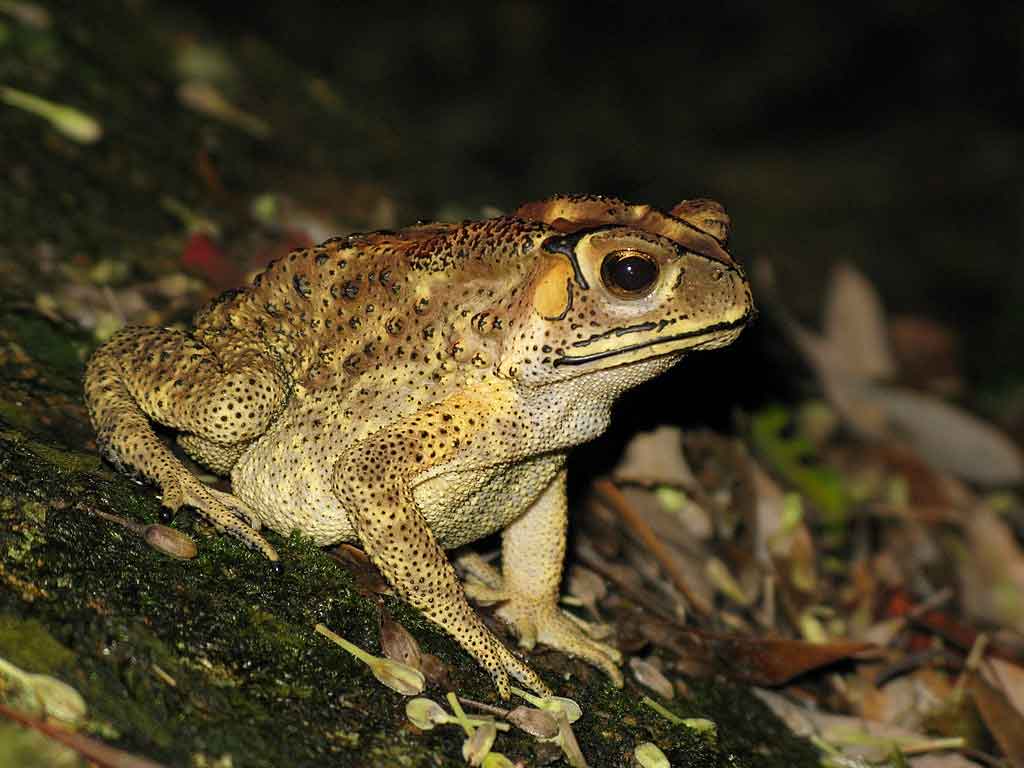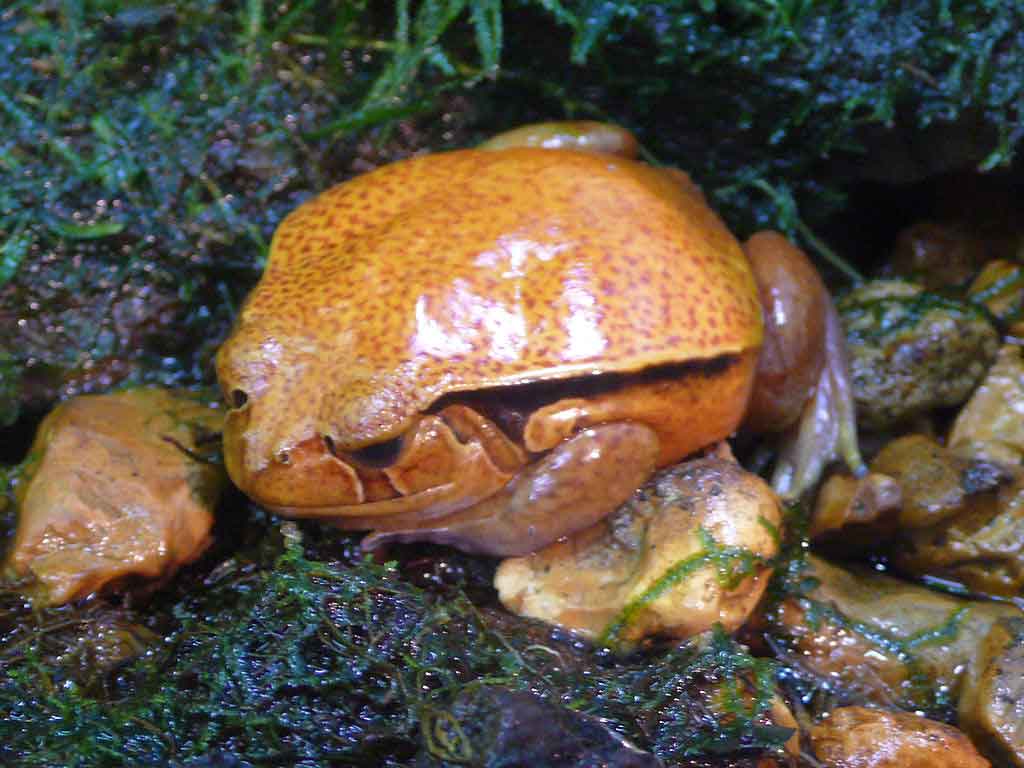
Content |
|---|
Several representatives of the Toads (Bufonidae) and narrow-mouthed frogs (Microhylidae) are regularly offered in pet stores. The toads Frequently encountered are the following the common asian toad (Duttaphrynus (Bufo) melanostictus) and the North American green toad (Anaxyrus (Bufo) debilis), as well as the false tomato frog (Dyscophus guineti), the Banded bullfrog (Kaloula pulchra) and banded rubber frog (Phrynomantis bifasciatus). Buying wild-caught specimens in favor of captive-bred should always be avoided.
Sex differences
Differentiation of the sexes is only possible in sexually mature animals. The males are usually smaller and in many species they develop calluses on the toes of the front legs.. Males ready to mate call, sometimes very strongly and persistently.
Behavior
The True toad and Narrow-mouthed frogs do not show pronounced social behavior. Most of them are peaceful with each other and can be kept individually, in pairs or groups. But, animals must not differ significantly in size.
The True toad and Narrow-mouthed frogs are mostly crepuscular or nocturnal.
Terrarium

Most species like to burrow and need a substrate of corresponding height. One terrarium for a single specimen of the smallest species (for example, the green dwarf toad) should have a floor space of at least 30 x 40 cm., for various animals of 60 x 40 cm.. In the case of the larger species (as the common asian toad, very active), the terrarium should not measure less than 80 x 50 cm. (length x WIDTH) for a single animal or 100 x 50 cm for several specimens. For species that grow a lot (for example, the Cane toad – Rhinella marina), are needed terrariums much bigger. Height terrarium (at least 30 cm.) not especially important for animals that live on the ground.
Fluorescent tubes with a daily lighting time of 10 to 12 hours are suitable for lighting. The optimum is a slight temperature gradient in the terrarium of about 23 – 28 °C with a humidity of 70 % approximately. This can be achieved by spraying the terrarium daily.. At night, the temperature should drop a bit for many species (normally not below 20 °C) and, at the same time, humidity should rise to 90 – 95 %. For the basic temperature, weak heating mats can be used, installed outside the terrarium. They can be used to heat the floor (at most one third of the soil surface!) or the walls. With the help of a thermocontroller, the heating mat can be specifically controlled to prevent overheating. Precise thermometers and hygrometers are needed to measure temperature and humidity.
The height of the excavatable substrate (for example, a terrarium soil mix, bark mulch, moss) must allow animals to fully excavate. The substrate should be slightly damp after daily spraying and should never dry out completely.. We must also avoid waterlogging.
Additional withdrawals (for example, coconut shells), a shallow water basin and natural planting complete the assembly.
Diet
Animals prefer to feed on live insects (crickets, crickets, grasshopper, cockroaches, etc.), worms and slugs. Regular administration of a mineral supplement ensures healthy bone growth. Mealworms, zophobas and wax moths should be fed only rarely due to their high protein and fat content.
Caution: many True toad and Narrow-mouthed frogs tend to gain weight. In the case of adult animals, it is enough to feed them every two or three days.
Care
Food scraps and feces should be removed daily. Animals usually defecate in their own hiding place, so the substrate must be changed regularly. The water bowls should also be cleaned daily and filled with fresh water.
Animal health must be monitored daily. The most common health problems in frogs are softening of the bones, emaciation or fatty degeneration and, above all, changes in the skin (for example, red discoloration of the skin). If there is any abnormality, consult a veterinarian who is familiar with amphibians.
Acclimatization and handling
Amphibians are animals of pure observation and should NOT be petted. In the first days in his new home, animals need some rest to get used to their new environment.
Due to the sensitivity of your skin, amphibians should only be touched in exceptional cases. Only the largest animals can be caught directly by hand. The use of disposable gloves is recommended (moistened). The smallest animals, on the other hand, should always be captured with the help of plastic containers or similar.
Special features
some species (for example, the Phrynomantis and more toads) can produce a poisonous skin discharge and should never be handled with bare hands. Protective gloves should be used for the care and handling of animals..
Attention: all native amphibian species are protected species and should not be taken from the wild. At the 17th CITES Conference of the Parties, held in the fall of 2016, the false tomato frog (Dyscophus guineti) came under the protection of the species (Appendix II). This regulation will soon be transferred to European legislation (obligation to inform, proof of origin required).

I loved it today I acquired a bufo marinus toad and I liked how to arrange it
Good afternoon. my name is Daniel. You sell lizards and amphibians to Brazil? You have cites authorization from Ibama and authorization from the ministry of agriculture?